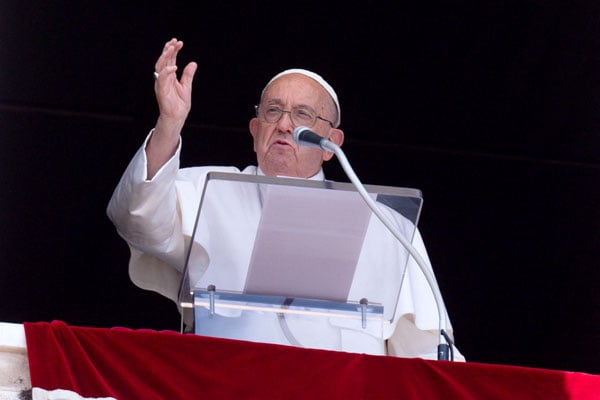Prime
The game-changer in African transport and trade

The Lobito Corridor is the first strategic Global Infrastructure and Investment economic corridor launched by US president at the G7 Summit in Japan in 2023, under the flagship G7 Partnership for Global Infrastructure and Investment initiative. PHOTO | SHUTTERSTOCK
What you need to know:
- The corridor will integrate the continent and enhance connections with global markets by expanding export possibilities, boosting regional trade.
The Lobito Corridor, which links Angola, Zambia and DR Congo’s mining areas, is going to be a game-changer in African trade and transportation of critical minerals, with experts now pushing for setting up of companies to process the minerals along the way.
The Lobito Corridor is the first strategic Global Infrastructure and Investment (PGI) economic corridor launched by US President Joe Biden at the G7 Summit in Japan in May 2023, under the flagship G7 Partnership for Global Infrastructure and Investment initiative.
The project comprises 550-kilometre of rail in Zambia from the Jimbe border to Chingola in the Zambian copperbelt, and 260km of main feeder roads within the corridor.
When completed, it will expand an economic corridor connecting the host countries to global markets to enhance regional trade and growth, and to advance the shared vision of connected, open-access rail from the Atlantic Ocean to the Indian Ocean.
African Development Bank (AfDB) Group President Akinwumi Adesina says corridors are critical for Africa’s development and Lobito is a good example of how partners can come together to develop corridors that work.
“It is not just a corridor for the exit of unprocessed materials. The consortium that includes the US government, Africa Finance Corporation and AfDB has committed to providing $500 million as part of that roadwork. We have committed our risk guarantee facilities to support how to leverage resources on that corridor,” Dr Adesina told The EastAfrican.
“When we talk about how to move products, as Africa we have to invest more in railways. If you are trying to decarbonise your transport system, you need to invest a little more in electric rail systems; if you are going to open up heartlands, agriculture, minerals, metals and so on, because they are heavy things to move, and for haulage, you need rail.”
The corridor will integrate the continent and enhance connections with global markets by expanding export possibilities, boosting regional trade.
A US Development Finance Corporation (DFC) $250 million investment, currently in due diligence stage, would support the Lobito Atlantic Railway (LAR) consortium that is upgrading and operating a 1,200km Benguela railway line across Angola, with advisory support from the AFC.
“The Lobito Corridor will pass through a lot of assets that can help the three countries mitigate climate change when pricing capital, discrimination against Africa occurs,” Zambia’s President Hakainde Hichilema said, when the deal was signed early this year.
He stressed that the project was a once-in-a-generation endeavour that required backing and acceleration.
The LAR upgrade will significantly reduce transport time, better connect critical mineral-rich regions in the DRC with the global markets and lower the carbon emissions footprint of goods moved by road.
By lowering costs for businesses on the corridor, it will also open new markets, including agribusiness.
“We are committed to working with our partners on the continent to build high-quality infrastructure and invest in agriculture, healthcare, and financial services that will impact lives and livelihoods across the corridor,” said Nisha Biswal, the US International Development Finance Corporation Deputy CEO, in Lusaka early this year to attend the PGI Lobito Corridor Investor Forum.
On May 7, on the sidelines of the Corporate Council on Africa’s US-Africa Business Summit held in Dallas, Texas, the US and Angola celebrated the signing of final agreements to finance three major infrastructure projects in the Lobito Corridor.
The US announced agreements for projects totalling more than $1.3 billion for clean power, radio connectivity and transportation infrastructure to support and accelerate the economic investment priorities of Angola.
The $450 million Acrow Bridge project is investing in modern transportation infrastructure through the engineering, procurement, and construction of 186 bridges throughout Angola.
This will involve financing and support from Exim, the Private Export Funding Corporation and Standard Chartered Bank. Similar projects are taking place in Eastern Africa, with the pan-African lender leading the way in sourcing financing.
The major infrastructure projects include the Arusha-Mombasa-Malindi-Lamu road, a Tanzania-Kenya-Ethiopia project and the Tanzania-Burundi-DRC standard gauge railway.
Dr Adesina said the bank is financing projects valued at $696.41 million for Burundi and Tanzania to start Phase II of the Joint Tanzania-Burundi-DRC SGR.
“We are investing in the Dodoma airport, the Central Corridor that is linking Tanzania-Burundi into the DRC, which is a $3.8 billion effort. We provided $696 million to Tanzania, and we are using a syndication to help raise close to $3.3 billion to be able to build that corridor.”
The most notable development in 2023 was the bank’s approval of $1.08 billion in the form of loans and guarantees for Tanzania to finance the construction of the regional SGR to develop the Central Corridor by incentivising large-scale mining and commercial agriculture.
The Bank was focusing on corridors that would link Kenya with Ethiopia and Tanzania.
“We are also financing the corridor that links Addis Ababa to Nairobi – Mombasa over 1,000km. That corridor alone has reduced the distance that people spent coming from Ethiopia to Nairobi from three days to less than 24 hours,” Dr Adesina said. “It has helped improve trade between Kenya and Ethiopia by more than 400 percent.”
The Bagamoyo–Tanga-Horohoro/Lunga Lunga-Malindi Road project that is under construction is financed by AfDB, the EU and Government of Kenya. The project, with 54 kilometres within Kenya, is expected to be complete by this year. Its construction began in 2021.
On the Kenyan side, the road project will cost Ksh7.5 billion ($50 million) and it starts at the proposed New Mtwapa Bridge near Mtwapa town.




